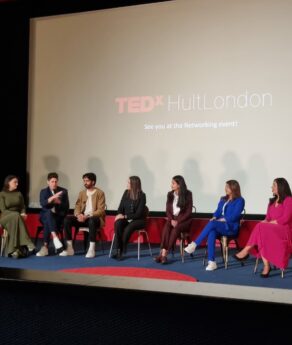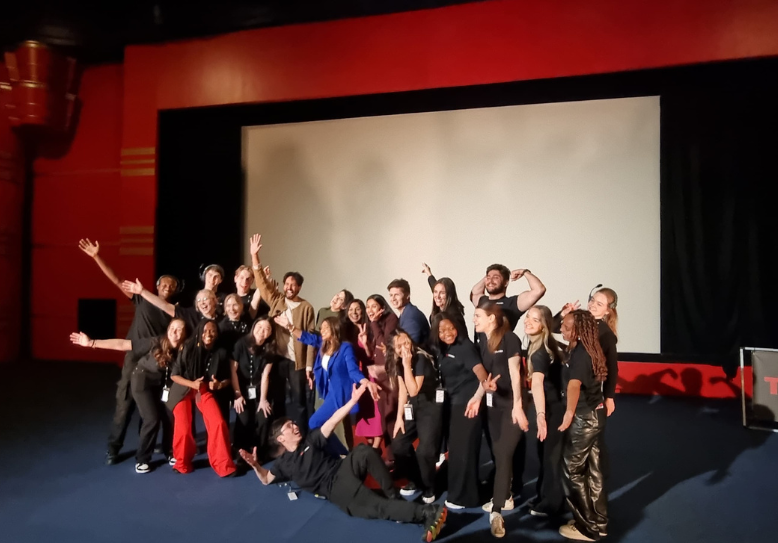At the Genesis Cinema, the topic for this year’s TEDxHult London event was “Ideas Worth Spreading”. And thanks to six amazing speakers, we left with some beneficial insights. Initially, we received a welcome goodie bag and popcorn and entered the space full of curiosity and a thirst for knowledge.
In the cinema room, we were welcomed by the host and president of TEDx, Patra Wanjiru Mwaniki. Her warm welcome speech gave us insights into TEDx. Patra then went on to introduce the first speaker, Sugandha Srivastav.
Sugandha Srivastav
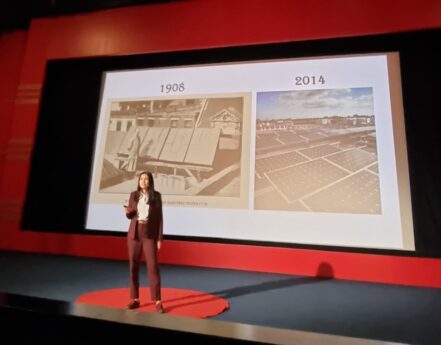

Srivastav shared a story that none of us expected. As the Professor of Environmental Studies at Oxford, she told us the story of solar panel development—and the life of its inventor, George Cove. Cove invented the technology allowing us to create energy from sunlight long before most of us in the audience expected– 50 years before it became well known. At the time of his operation, Cove’s major competitors like Thomas Edison were threatened by his invention.
Cove was kidnapped by an unknown party, with the alleged reason being that competitors felt threatened by his invention and the scalability of solar power. He was requested to drop his work completely and was not mentioned again. Srivastav concluded the talk by showing the calculation of how much environmental impact his invention would have had if it had been continuously worked on.
Ella Robertson McKay
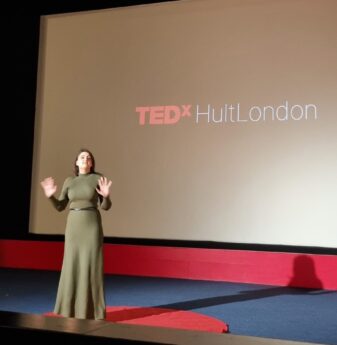

The next speaker, Ella Robertson McKay, explained how activism should be done. In her years of experience, she has seen examples of bad activism leading to a neutral impact or more harm to the cause. She calls this type of activism “Slacktivism”—when people do very little—like sharing on social media.
McKay argues that this stops people from taking bigger actions, like attending a protest. She ended the talk with a call to action. Do you feel strongly about a cause? Then get out there and make a difference.
Dr. Belynder Walia
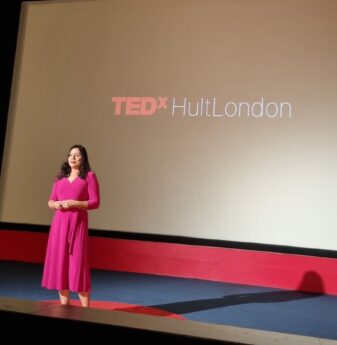

The third speaker, psychotherapist Dr. Belynder Walia, talked about our superpowers, specifically, “integrated intelligence”. She introduced the theory of three brains; mind, heart, and gut. By integrating these, we become more powerful as people. She especially emphasized the importance of listening to our “gut brain” which helps us the most to listen to our intuition. Walia explained that the best people at lnistening to their guts are children. Essentially, allow our inner child to take the lead more often!
Ben Hanlin
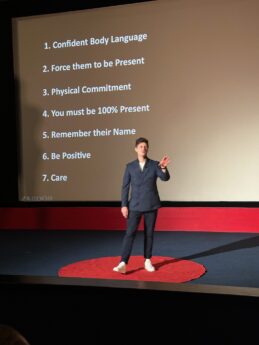

After a break, we were joined by Ben Hanlin, who talked about public speaking skills. He entered the stage with energy, immediately capturing our attention. He started by asking the audience to stand up so that he could perform a card trick. While performing it, there was a timer. When it reached slightly over two minutes, he paused and explained the impact of the exercise on viewers, and how to incorporate different aspects of this into a speech to create the biggest impact. Key elements he mentioned were smiling, open body language, physical engagement with the audience, and remembering people’s names.
Asavari Moon
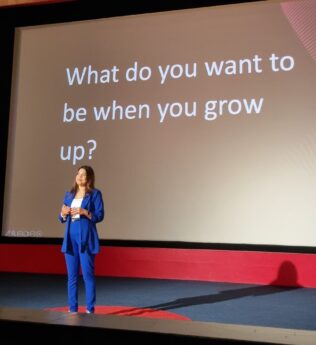

Next, we listened to Asavari Moon who gave us insights into the creators’ economy. She explained how kids no longer aspire to be doctors, police officers, or astronauts. Instead, they want to be influencers. However, she talked about how insecure this career path can be as more and more brands are incorporating AI into their marketing materials. Moon showed us different images of the AI models used in campaigns and shocked everybody with how realistic they can look. Often, the average influencer’s paycheck is the most appealing reason people pursue this career. However, there’s big competition from AI models who don’t have holidays and can work anywhere and any place.
Videha Sharma
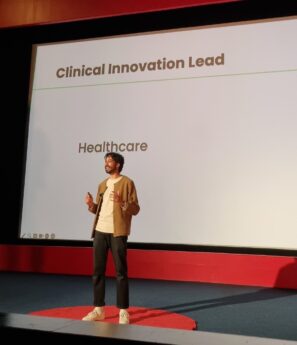

The last speaker, Videha Sharma explained the incorporation of design thinking into healthcare. He started by explaining how his brother’s condition motivated him to change the approach to the way healthcare is done. As a doctor, he started to incorporate design into his practice and shared how important it is to personalize the practice to receive the best result in treatment.
Conclusion
After the talks concluded, Alejandra Mejia Garcia hosted a Q&A session with all the speakers, where we asked them all our burning questions.